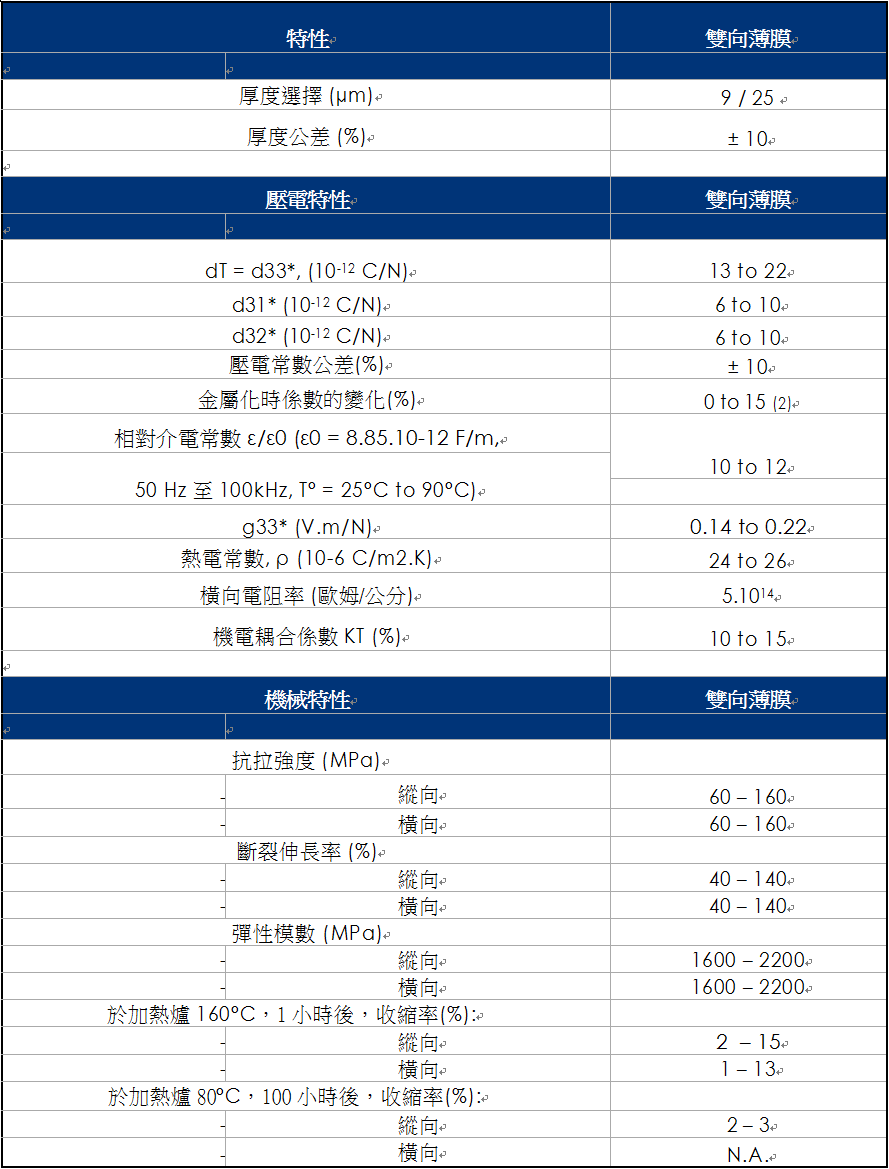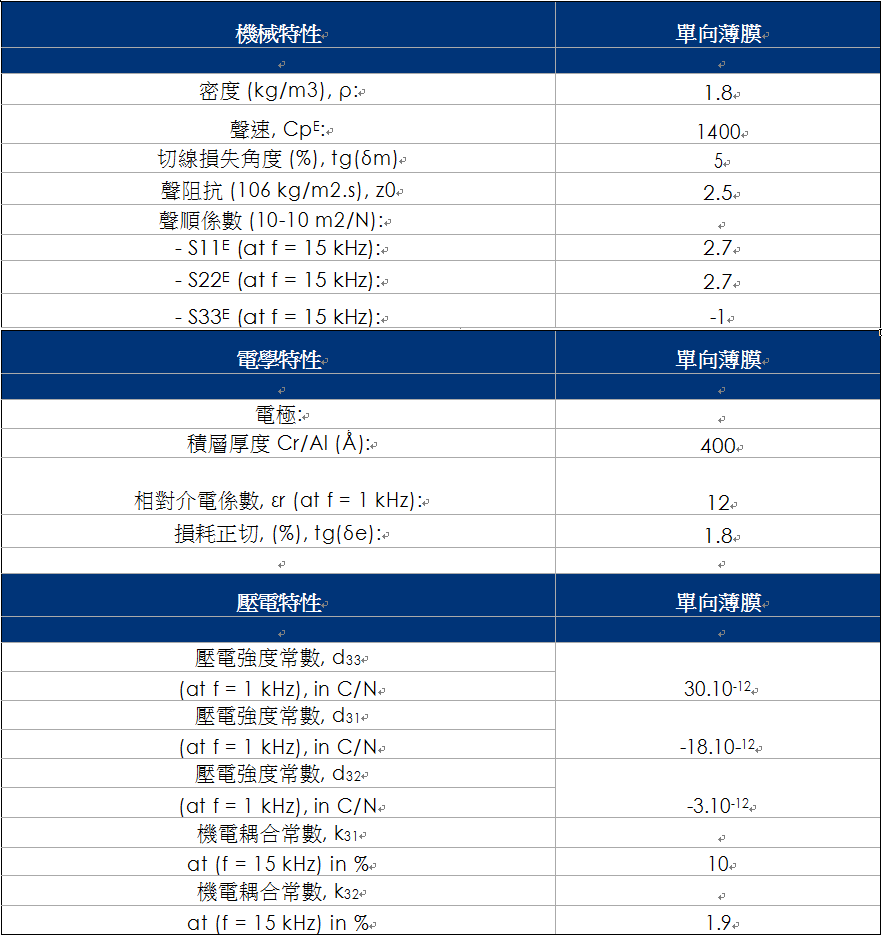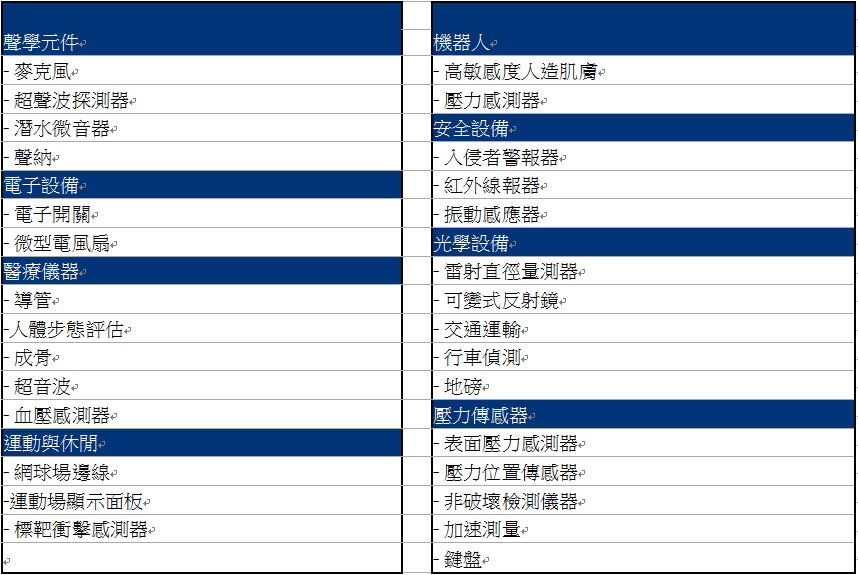Piezotech films - technical information
source:未知date:2018/12/15 18:48 browse:
1. Piezoelectric and pyroelectric effects
Since the discovery in 1880, by the brothers Jacques and Pierre Currie, of the piezoelectric effect shown by the some simple asymmetric crystals, the phenomena has raised a lot of interest. “Piezoelectricity” finds its roots in the Greek word “piezo” which means pressure. When certain materials are subjected to mechanical stress, electrical charges proportional to the stress appear on their surface. Conversely, when an electric potential difference is applied to these materials, mechanical deformation occurs. This effect is known as piezoelectricity. Similarly, when the temperature of the material is changed, an electric potential appears between its terminals: it is called the pyroelectric effect. Quartz and some ceramics are widely used in the manufacture of mechanical and acoustic transducers taking advantage of these phenomena. The surfaces of these materials are small and highly rigid.
2. Piezoelectric films
Kawai was the first one to discover on 1969 a highly noticeable piezoelectric effect on polyvinylidene fluoride (PVDF). This material is the most studied and utilized piezoelectric polymer. However, commercialized piezo films only appeared on the world market in 1981.
Piezoelectricity can be obtained by orienting the molecular dipoles of polar polymers such as PVDF in the same direction by subjecting appropriate films to an intense electric field: this is polarization. This polarization is mainly attributable to the spatial arrangement of the segments of the macromolecular chains, and the contribution of the injected charges to the piezoelectric effect is of secondary importance.
3. Characteristics properties of piezoelectric films
The piezoelectric activity of piezoelectric films is determined by the coefficients of proportionality between the mechanical causes and the electrical effects. The coefficients “d” are obtained by measuring the density of charge (Coulomb/m²) which appears on the surfaces of the film (direction 3 = thickness) when a mechanical stress of 1 Newton/m² is applied.
● Depending on the thickness: d33
● In the plane of the film, in the direction of the machine: d31
● In the plane of the film, in the transverse direction: d32
In the first case, if the film cannot be deformed freely in its plane, the piezoelectric constant is called d33* or dT. The coefficients “d” are expressed in Coulomb/Newton (C/N). If the variation in the electric field is measured per unit of stress, coefficients “g” are obtained. These are connected with coefficients “d” by the correlation g=d/ε, where ε is the dielectric constant depending on the thickness of the film. Coefficients “g” are expressed in V.m/N. Constants “g” and “d” are most widely used for the design of electromechanical transducers. The conversion of mechanical energy into electrical energy is represented by the electromechanical coupling coefficient KT expressed in %:

The pyroelectric constant “ρ” is the density of the charge at the surface (C/m²) when the film temperature is raised by 1 degree Kelvin; “ρ” is expressed as C/m²K. The coefficient is used for designing thermal pick-ups. Furthermore, the films are characterized by their mechanical properties: their modulus of elasticity, resistance and elongation at break.
4. Properties of piezoelectric films and sheets
The range of piezoelectric films presents a unique combination of properties to the markets:
● Flexibility (possibility of application on non-level surfaces)
● High mechanical strength
● Dimensional stability
● Balanced piezoelectric activity in the plane of the film
● High and stable piezoelectric coefficients
● Characteristic chemical inertness
● Continuous polarization for great length spooled onto drums
● Thickness between 9µm and 1mm
● Acoustic impedance close to that of water with a flat response curve
The characteristic properties of our range of piezoelectric films and sheets, mono or bi-oriented are given in the table and diagram below. Various type of metallization can be applied to these films, depending on their application.
5. PVDF piezoelectric films properties
(1): Constants are given as indicative value, it depends strongly on processing conditions (annealing & poling) and on temperature.
(2): Excessive heating may destroy piezoelectricity. It is advised not to heat above 90°C for more than 1 hour.
6. Properties of PVDF mono-oriented piezo sheets
(1): Constants are given as indicative value, it depends strongly on processing conditions (annealing & poling) and on temperature
7. Field of applications
The properties of PVDF piezoelectric films suggest that they can be considered for developments in numerous fields of applications where experimentation shows encouraging results.
7.1 Example of application
7.2 Examples of Data Sheets of various piezoelectric films
PVDF MONO-ORIENTED FILM – 25 µm(1)
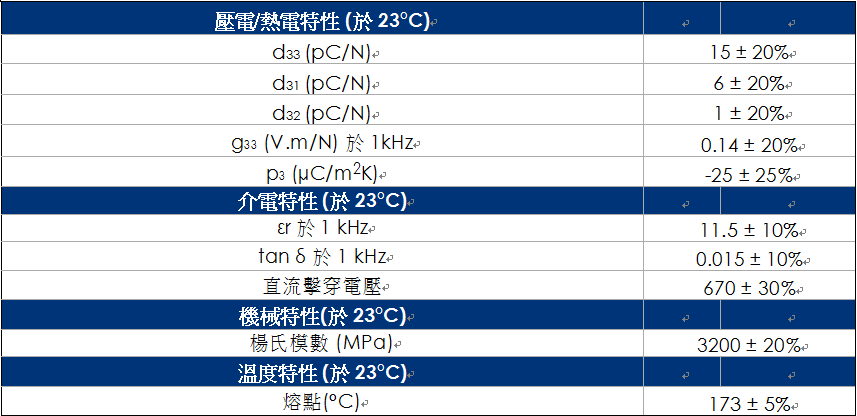
(1): Constants are given as indicative value, it depends strongly on processing conditions (annealing & poling) and on temperature
PVDF bi-oriented film – 9 µm
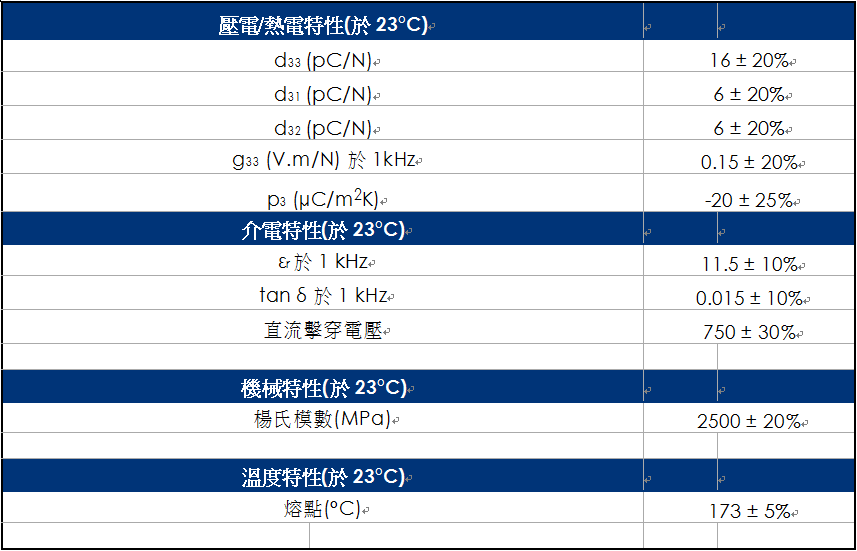
(1): Constants are given as indicative value, it depends strongly on processing conditions (annealing & poling) and on temperature
P(VDF-TrFE) COPOLYMER 70/30 FILM – 20 µm
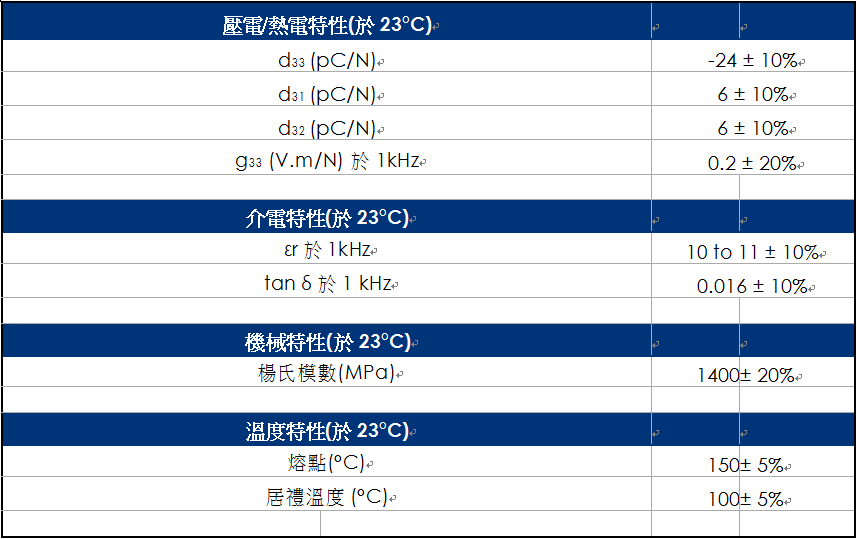
(1): Constants are given as indicative value, it depends strongly on processing conditions (annealing & poling) and on temperature
P(VDF-TrFE) COPOLYMER 75/25 FILM – 20 µm
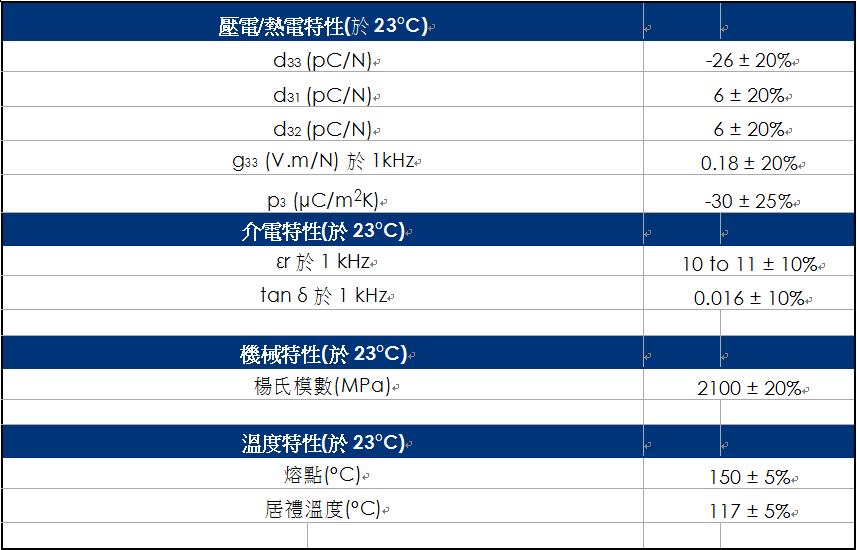
(1): Constants are given as indicative value, it depends strongly on processing conditions (annealing & poling) and on temperature
P(VDF-TrFE) COPOLYMER 80/20 FILM – 20 µm
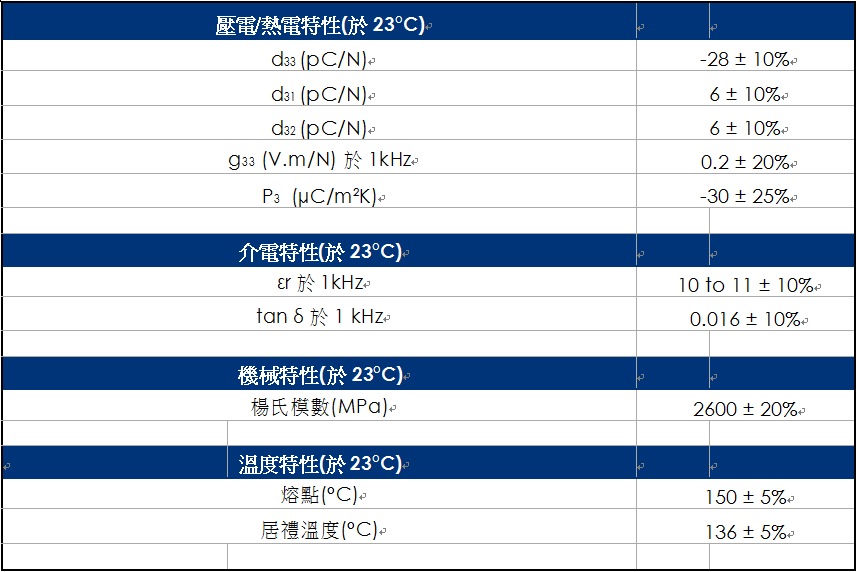
(1): Constants are given as indicative value, it depends strongly on processing conditions (annealing & poling) and on temperature

